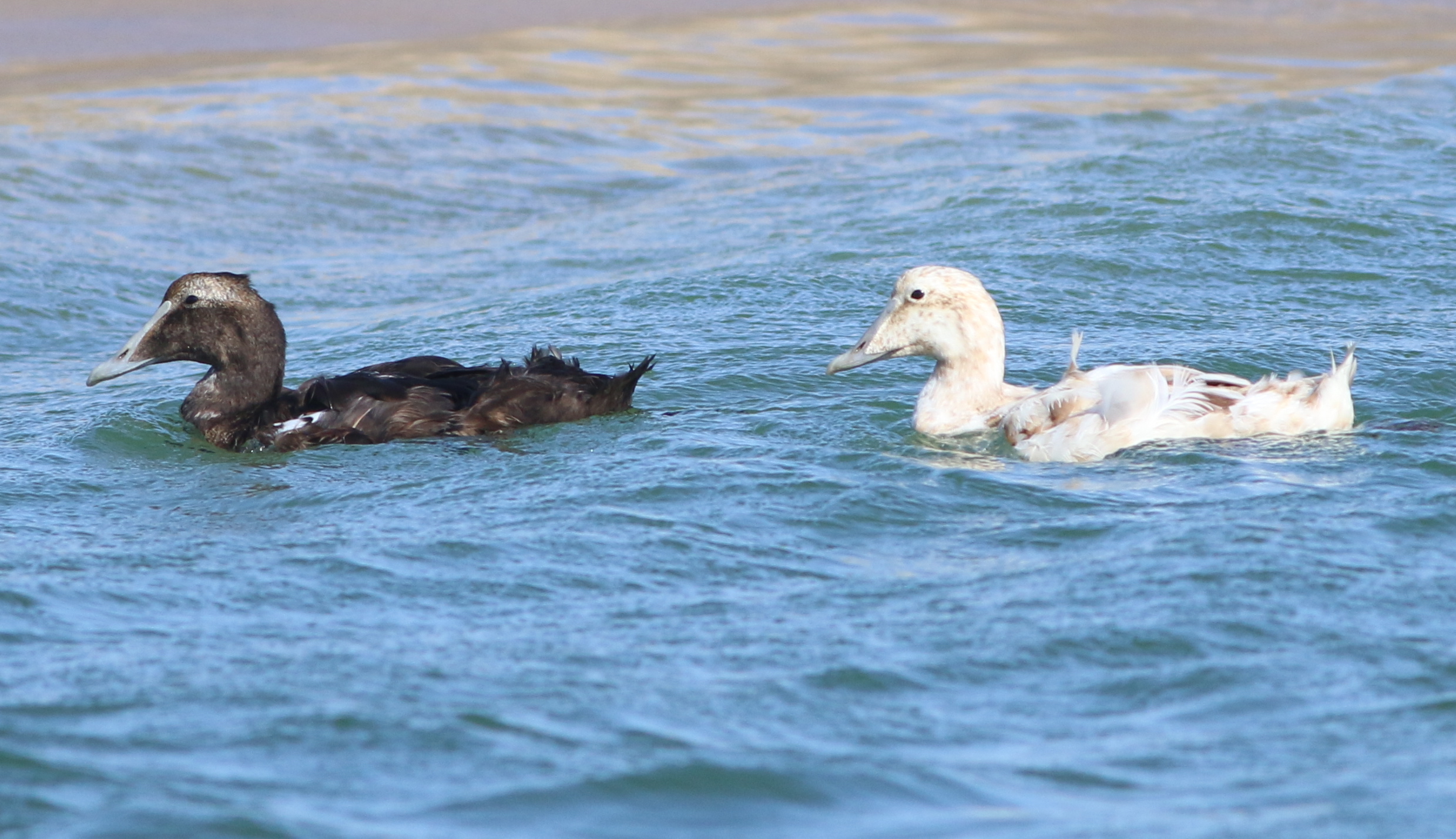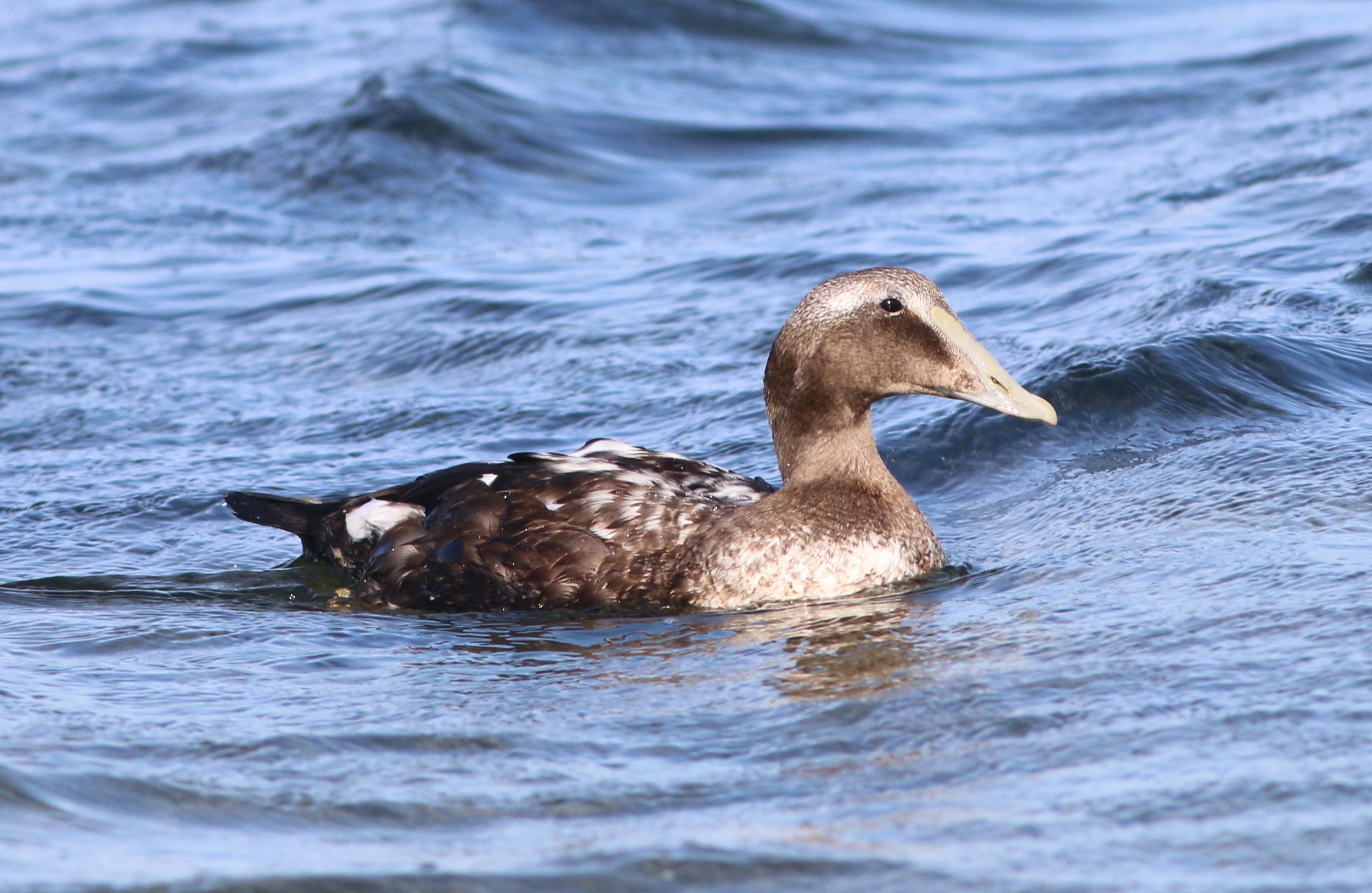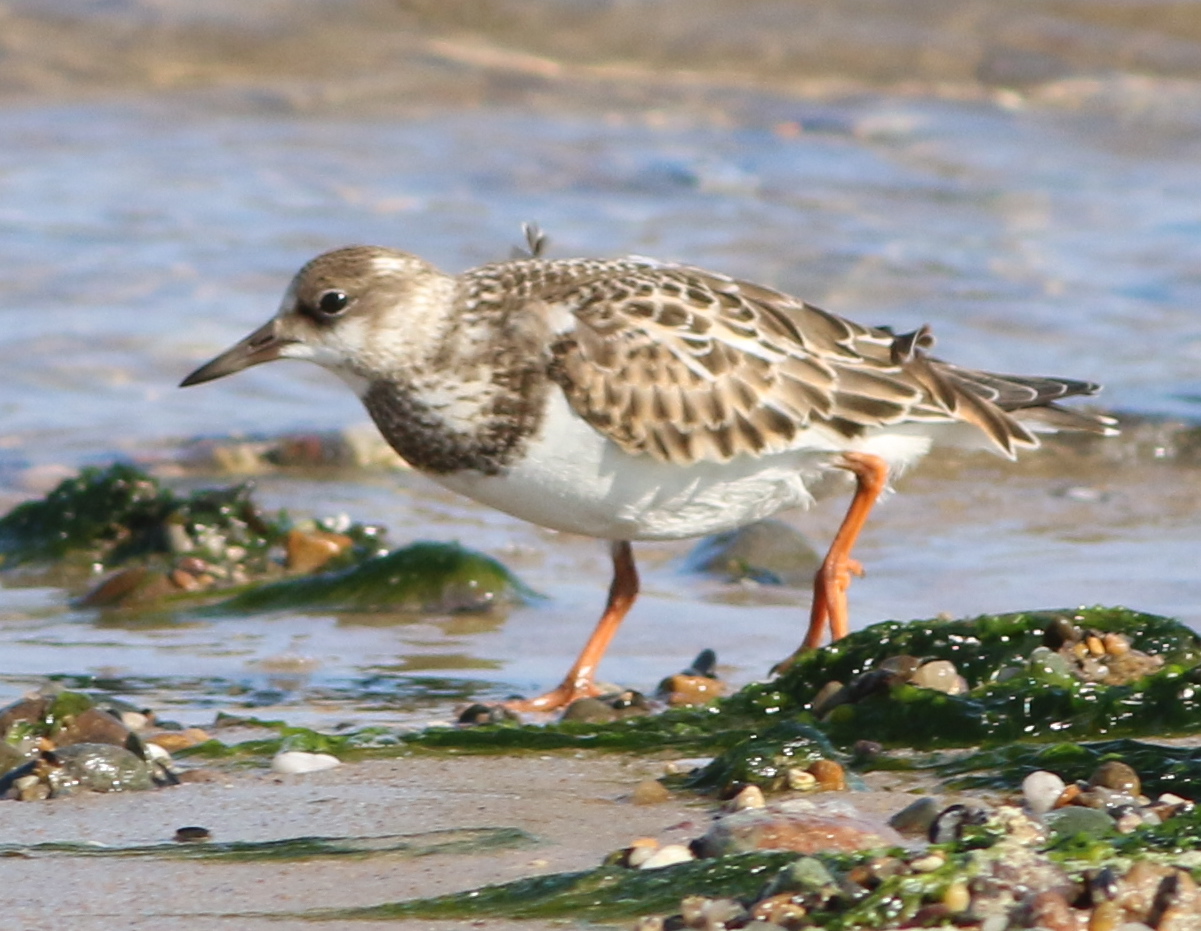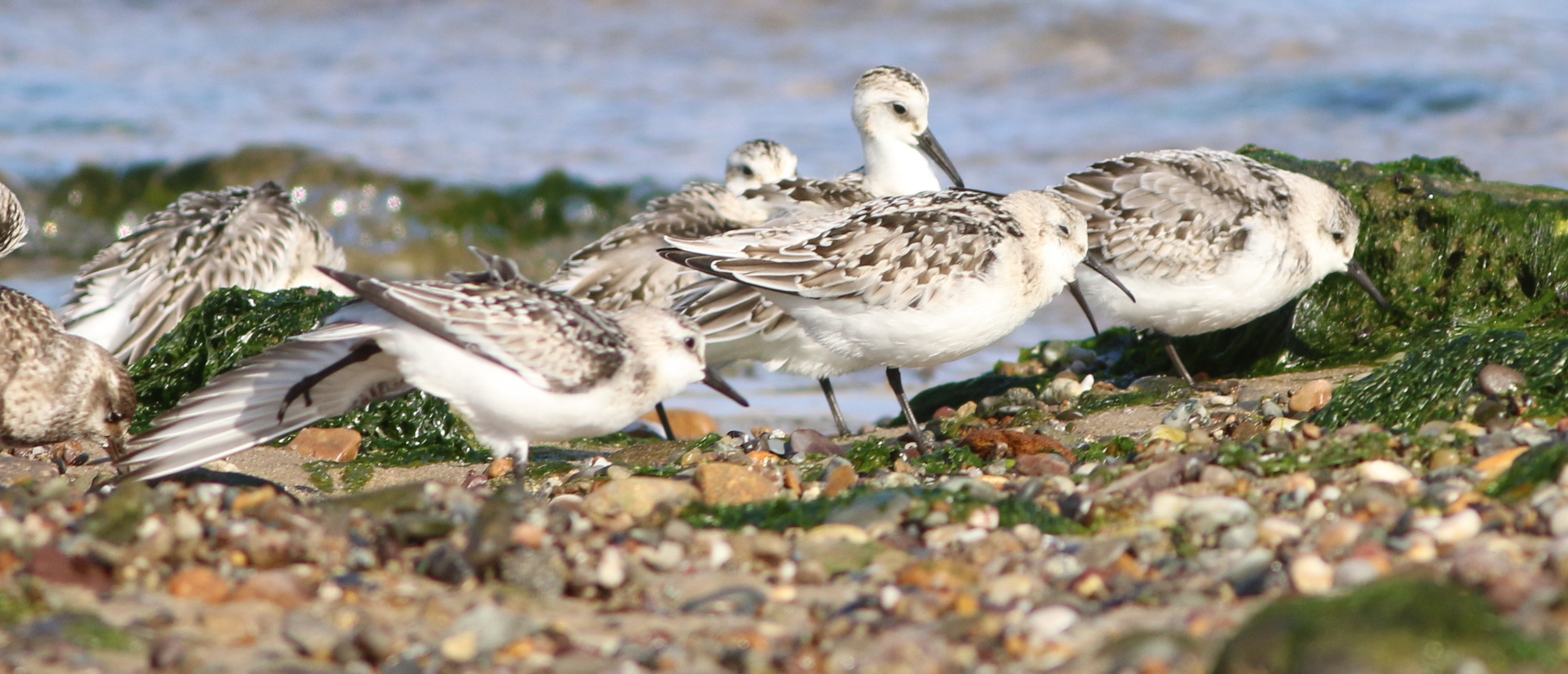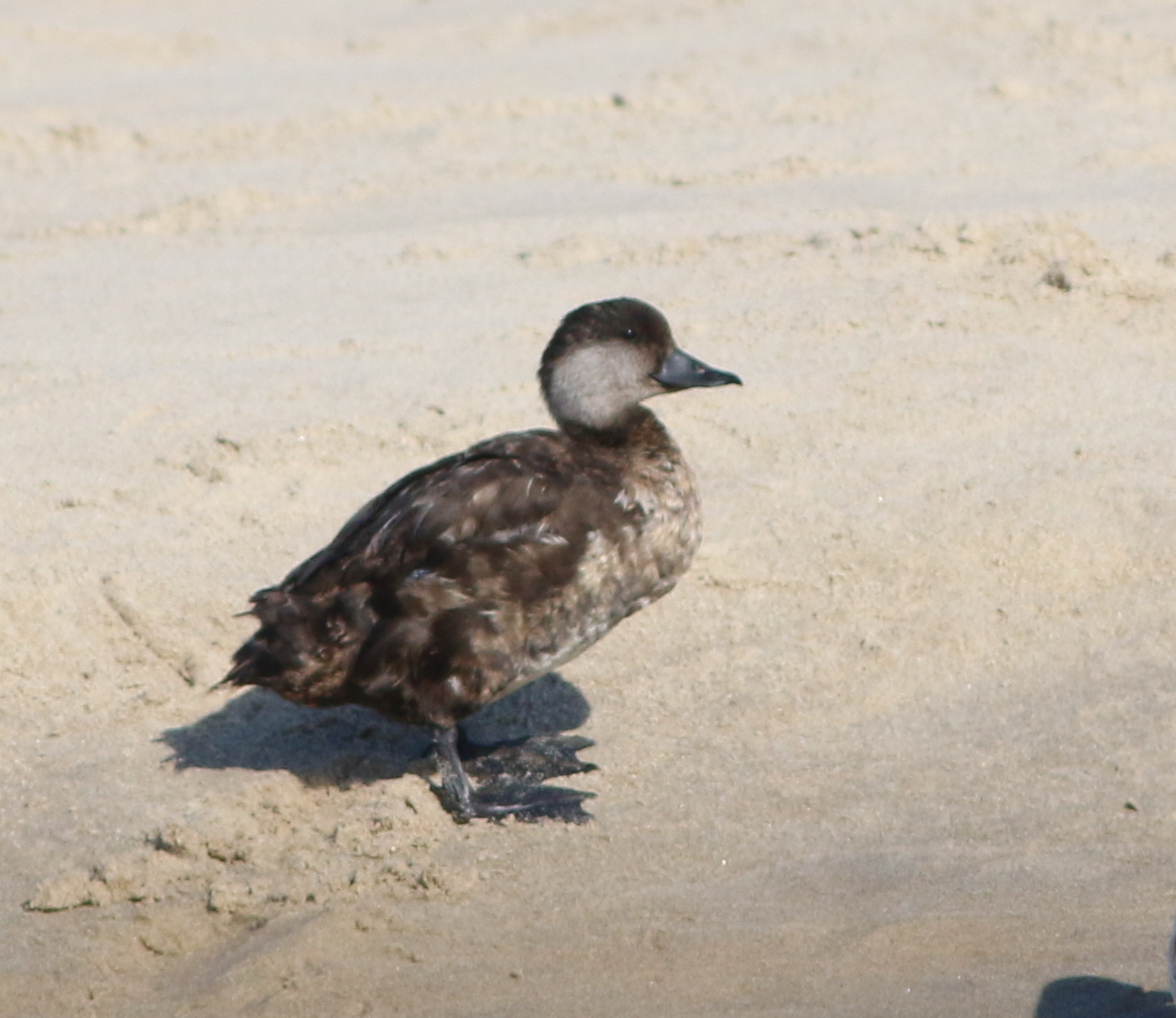September 20, 2014
David Sibley birding. Hard to get a good photo while not being too creepy.
"Excuse me, but how did you know that that was a Parasitic Jaeger?" I can barely believe that I am asking David Allen Sibley a question about birds. THE Sibley. The same one whose field guide is in my car. I can only hope that he takes my question as one of curiosity, as I had intended, and not as one of incredulity. (Far be it for me to ever question David Sibley.) The bird in question had been a mere speck on the horizon that I would have dismissed as some dirt on my binoculars if Sibley had not pointed it out to us as a Parasitic Jaeger. I really, really want to know how he had been able to turn a mere SPECK into a jaeger. To my delight, he explains to me that jaegers arc back and forth above the horizon. He could deduce that it was a Parasitic over a Pomarine or Long-tailed Jaeger by the simple fact that Parasitics are often able to be seen from land while the other two are almost always far out at sea. Finally, the flight of the Parasitic is buoyant and tern-like- all three points together had helped him give an identity to the speck. Amazing. And what is also amazing-I had just gotten a lesson in birding from David Sibley.
My birding group heads down towards the water's edge. The trip leaders have chosen to bring us to the Cape Cod National Seashore in Wellfleet. Aesthetically, it is astounding: the vivid green dune grass whistles as it is buffeted by boisterous wind. The ocean seems to go on forever. And the birds! Tree swallows dance over our heads in a never-ending migratory stream. There are gulls everywhere, chasing each other or sleeping in the sand, floating on the wind, drifting amongst droves of Common Eiders at sea. Every few minutes, a scoter or cormorant blasts across the horizon. I feel as though I can barely take a step without setting off a frantic group of tiny shorebirds. I stare with disbelief as one of the rocks on a sandy outcropping in the distance rolls over-seals! I stretch my arms out beside me, grinning gleefully, and face the wind head-on. Now this is what I dream of when I think of Cape Cod birding.
I could just walk along this beach for hours, watching the birds and taking photographs. In just a few hours, I have met four new birds. I marvel at the manner in which Sibley and the other trip leader can decipher shorebirds just by the way they act. I envy this ability- but am beginning to realize that the reason these birders are so talented is, in part, because they are so knowledgable of the birds' behavior. I am such a visual person that I jump to colors and physical appearance to identify a bird. It is only after I see them repeatedly that I can tell what they are by the way they act; I suppose that I have been taking behavior into account, just subconsciously. As I watch the trip leader again produce a Parasitic Jaeger on the horizon (I can actually see it arcing this time) and then a Northern Gannet (at this point I am just flabbergasted) I resolve that from now on, I will not look at a bird without noting at least one thing about its behavior. Will I remember to do this every time? Nope. But at least I will try.
Birding with good birders is inspiring. I can feel myself burning with ambition as I pick through the shorebirds on our way back, trying so hard to see something that will help me determine what species it is. Ambition or not, it is still so hard. I wish that we could just stay and keep birding; that I could just keep learning from these veterans.
As we all get off of the bus when we return to the festival headquarters, I wait behind while everyone takes a turn talking to David Sibley. I can still barely believe that I got to go birding with the man who draws birds so incredibly. He figured out how to live the dream: he watched birds and drew them, and became famous for both his skill as a naturalist and his artwork. And this is why I need to talk to him; why I made sure I got to go on this field trip; the main thing that drew me towards the Cape Cod Bird Festival in the first place. I want his advice. And more than that- I know that deep down, I am looking for some kind of gratification. Not everyone thinks that 10,000 birds is a good idea. Many people I know are twiddling their thumbs, waiting for me to get a "real job." But how could I? These people do not understand that seeing and drawing birds is more than a hobby. It is a part of me. It has become a compass to live by. And to draw every bird in the world is about so much more than just numbers- I do not know what it will fully be, yet. But I know that it is very much about finding myself as much as it is about finding birds. And I want to hear that this is okay.
With a deep breath, I approach Sibley. He has such a shy personality that I almost feel badly for bothering him as I ask him how he did it, how he lived the dream. To my delight, he takes the time to explain to me some of the things that he did and some of the directions I could go in. I then tell him about 10,000 birds: "I am going to see and draw every bird in the world." He continues to listen. I confide in him that some people think that I am crazy; that even today many of the people I had talked to during the trips looked disappointed when I explained to them what I wanted to do now that I had graduated college. "But I am going to make it work!" I tell him as I hand him a set of my postcards with my best images. I thank him for his field guides and for being an inspiration. Sibely looks through them right then and there. "I really like the bitterns!" he tells me. When he finishes, he looks at me and says, "I think your idea is fantastic."
I manage to hold it together as I shake his hand. But even before I have made it back to my car, my vision is growing blurry as I hear Sibley's voice in my head, over and over.
"I think your idea is fantastic."
New Birds: 236-239
Parasitic Jaeger, White-rumped Sandpiper, Red Knot, Lesser Black-backed Gull


